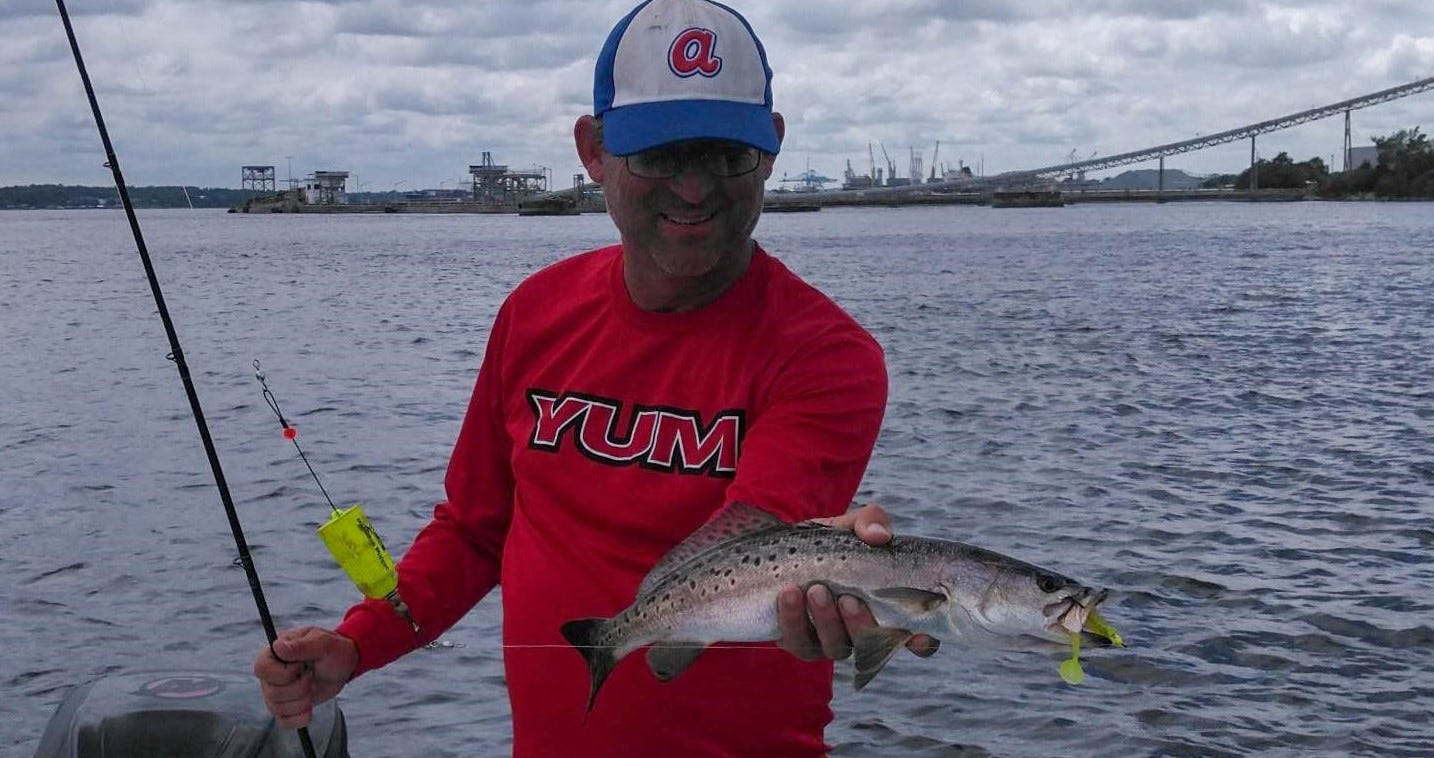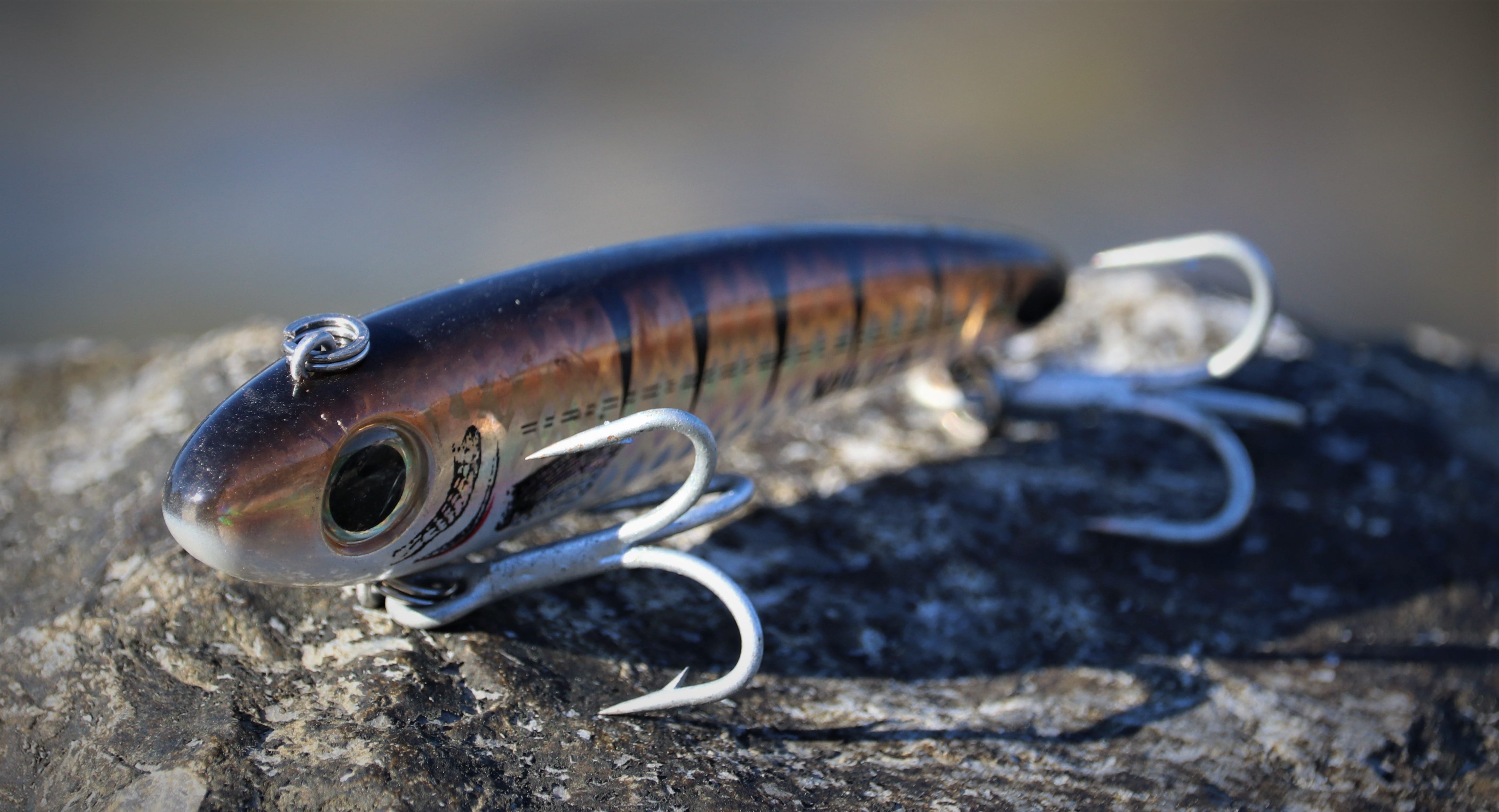- Feb 28, 2022
Top to Bottom for Redfish & Trout
Selecting saltwater lures that allow you to effectively work the best part of the water column can help you catch more fish.
“Take it from the top.”
That phrase typically suggests going back to the beginning of a scene or song in some sort of rehearsal, but it’s also a good strategy for choosing saltwater lures for finding redfish or trout and tapping into the day’s finest action. Surface lures can be highly effective for prompting bites and serve up extra fun fishing. So, starting on top simply makes sense.
That said, some days fish will mostly near the bottom or somewhere between the top and bottom, so it’s valuable to have a “top to bottom” selection of saltwater lures and test offerings that work all parts of the water column, allowing the fish to reveal their daily preferences.
It’s worth noting that this is not a discussion of deep vs shallow. Much of time, with spotted seatrout and especially redfish, the top and the bottom might only a handful of feet apart, and we’re mostly looking at fairly shallow water. We’re instead distinguishing between saltwater lures that work right on the surface, those that swim through middle depths and those that bump bottom or at least stay very close to the bottom through most presentations. Each appeals to fish that are feeding differently.
Also noteworthy, it isn’t always an exclusive “top,” “middle” or “bottom” situation. In fact, it’s more common to be working different levels of the water column during a day and to keep rods rigged for each. Still, understanding each zone and how the redfish and trout relate to each and considering those factors as you work different areas can have a major positive impact on your success rate.
Critical Considerations


The first thing to think about when deciding which level of the water column to work is what the fish are apt to be eating. If you’re working a marsh edge on a rising tide and crab holes are submerged, it’s probably a good time to work the bottom. The same is true if fish are feeding on mudminnows or another bottom-oriented species of baitfish. If menhaden or finger mullet are the more likely forage, trout and redfish are far more likely to be feeding in the mid-level of the water column or at the surface.
Conditions also factor significantly into the approach planning. Stained water and rough conditions cause fish to hold tighter to the bottom and to cover, favoring bottom and mid-level strategies. Calm conditions and lightly stained to clear water are conducive to feeding on the surface.
The nature of the cover and structure is also plays into the equation. Fish more often orient upward to feed when they are cruising sand flats and gradual points and other more open structures, while craggy shell bottoms and submerged grass create hiding places for bottom-based ambush feeding. If fish are holding behind specific objects the break the breaks, they are more apt to be feeding somewhere in the middle.
Visual clues also reveal plenty. Fish feeding on top and baitfish scurrying across the surface obviously point toward surface presentations. Meanwhile, “slicks,” which are the oily spots that appear when predator species feed beneath the surface, reveal that fish are feeding in that spot, but not on the surface. Gulls or other birds flying in tight circles and diving tell you game fish are pushing baitfish to the surface while birds roving a broader area suggest fish feeding in the area but not actively schooling.
Top to Bottom Strategies


With all else being equal it’s hard to ague with starting on the surface or at least having handy lures in your initial mix. Beyond being most anglers’ pick as the most fun way to catch redfish and trout, topwater lures commonly favor bigger fish. As importantly, they can help you locate feeding fish, which will often swipe at topwater lures or push up swells behind lures even when they won’t quite commit to feeding on the surface.
Walk-the-dog baits, like Spooks and Rebel Jumpin’ Minnows, are ideal for covering water and calling fish from farther away. Forage, conditions and the mood of the fish help you determine whether to throw a full-sized Saltwater Super Spook or something smaller, possibly even downsizing to the new 3-inch Super Spook Boyo. For casting near marsh edges, seawalls or other cover, a popper or a prop bait can be better for making commotion and staying close.
Minnow style lures, such as a Cotton Cordell Red Fin or Smithwick Rattlin’ Rogue, work well for imitating the finger mullet and menhaden that redfish commonly feed on in the middle zone. They can be wobbled along steadily or made more erratic with jerks and pauses. A Bomber Suspending 15A allows for a similar presentation but gets a bit deeper than most baits of the same style.
A Bomber Mullet, which is a subsurface walking lure, also works nicely for imitating a baitfish and working the middle zone. Because it is a natural slow sinker, a Mullet can be worked just a couple of feet beneath the surface by starting the retrieve right away and keeping the rod up or worked substantially deeper by pausing after the cast and working the bait slower with the rod tip low.
A Bomber Drumbeater spinnerbait is a great choice for targeting redfish close to the bottom, especially around oysters and close to marsh grass. Cast it, let it sink almost to the bottom and reel it slowly and steadily. The thumper Colorado blade sends out vibration, getting fish’s attention, and the flash of the blade and minnow-style body prompt attacks.
A 3- or 4-inch swimbait, such as a YUM Pulse or Gene Larew Long John Minnow, fished on a jighead and swam near the bottom or even hopped down a slope, works wonderfully for for redfish or trout that are holding tight to the bottom. A YUM Spine Craw, although made to imitate a crawfish and designed primarily for bass fishing, is an excellent option for imitating a crab or a shrimp when fished on a jighead and close to the bottom.
Although we’ve focused primarily on targeting redfish and trout, a bonus that commonly comes from working near the bottom is that you could nab some flounder, which are ambush feeders that hold flat on the bottom and nab baitfish or crustations that pass too close. A jig bounced along the bottom or a spinnerbait or minnow-style bait worked close to the bottom will sometimes yield flat-side bonus fish.
Dual Zone Rig


Notably, fishing a soft-plastic lure such as a Pulse or Spine Craw or a live shrimp or baitfish beneath a Paradise Popper Xtreme offers best-of-both-worlds appeal for topwater and mid-level or even topwater and the bottom zone, depending on the spot and the length of your leader.
The float splashes and clacks on the surface, calling in fish that are relating to surface activity, while the offering suspends at a predetermined depth, farther down in the water column, where redfish are trout are apt to be feeding if they aren’t quite committed to attacking surface offerings.
Popping a cork is an easy and highly effective way to catch redfish and trout in settings ranging from marsh edges in creeks to open areas of bays. It’s also incredibly fun because it has that iconic, back-to-the-basics element of setting the hook when the cork suddenly plunges out of sight!
6 Spectacular Saltwater Lures


Heddon Super Spook Jr – Calls them up with its walk and talk. The small profile makes it look like an easy meal.
Cotton Cordell 4.5-inch Pencil Popper – A wider walk and added splash make Pencil Popper extra good when there’s a bit of chop.
Bomber Mullet – Perfect baitfish profile and a slow sinker that allows you to work a range of depths.
Smithwick Floating Rattlin’ Rogue – Rolls, darts and flashes like a baitfish when worked quickly with snaps of the rod tip.
YUM 3.5-inch Pulse – Mid-level or bottom, dependent on rigging and presentations. Outstanding beneath a Paradise Popper Xtreme.
Bomber Drumbeater Spinnerbait – Pro tip: A YUM Pulse makes a fabulous replacement body for a Drumbeater Spinnerbait!



